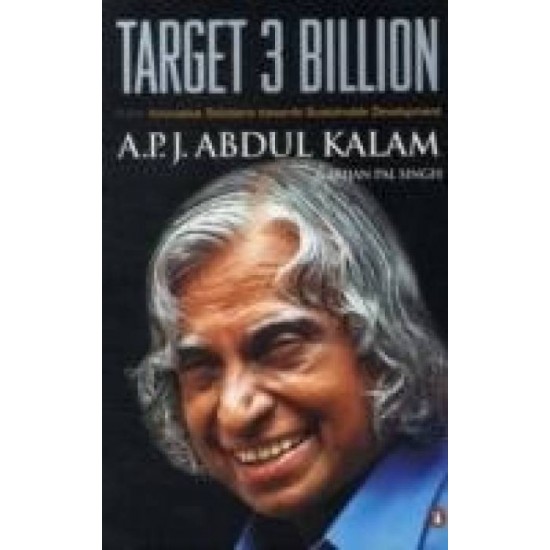
Target 3 Billion: Innovative Solutions Towards Sustainable Development explores the authors’ vision for the rural regions of the country, and the strategies by which the poorer regions can be integrated into the mainstream in terms of social, economical, and technological progress.
Summary Of The Book
Target 3 Billion: Innovative Solutions Towards Sustainable Development talks about the many difficulties that rural societies face. These places are often ignored in terms of infrastructure like roads, transportation, and electricity.
The authors then talk about how a group of passionate people, or even an individual, can bring change in a short period of time. They discuss how Fabio Luiz de Oliveira Rosa managed to transform a rural region in Brazil by giving the people access to good water supply and electricity.
The authors also describe how a community owned region of 400 acres, the Magarpatta village, was transformed into a modern township with an IT Park. They also introduce the Bhadariya village, which was a wasteland in the middle of the Thar Desert. Bhadariya posed additional challenges, as most of the villagers were addicted to alcohol, tobacco, and other substances.
The head of the Bhadariya Ashram, Baba Bhadariya Maharaj, initiated a cooperative program that first began as a campaign for de-addiction of the local people. Once the people were back to their senses, they improved their environment by digging tube wells, planting trees, and practicing methods for water conservation and irrigation. Soon the place was transformed, and became rich with cultivable lands and herds of cattle.
Target 3 Billion: Innovative Solutions Towards Sustainable Development also concentrates on PURA (Providing Urban amenities in Rural Areas), a programme initiated by Kalam when he was the President of India. The book discusses how this model could significantly help improve the infrastructure of villages, and provide them with fundamental necessities like water and electricity, as well as other requirements such as roads and transportation.
The role of technology in development is also explored, as they talk about how Information Technology could be used to provide access to better education and other knowledge in remote areas. This book makes it apparent that the integration of rural economies is essential for achieving sustainable development of the country as a whole.
About The Authors
A.P.J. Abdul Kalam is a renowned scientist and a former President of India.
He is also the author of other books like Wings Of Fire: An Autobiography, India 2020: A Vision For The New Millennium, Ignited Minds: Unleashing The Power Within India, and The Luminous Sparks.
Dr. Kalam was involved in the development of India’s first satellite launch vehicle, the SLV-III. He was also involved in the operational and administrative aspects of the Pokhran mission, the nuclear test conducted in 1998. Dr. Kalam became President of India in 2002. He initiated many constructive programmes to fulfil his vision for the country as an economic and technological leader by 2020.
Srijan Pal Singh is a management graduate and a social activist.
Srijan Pal Singh did his undergraduate education in Electrical Engineering, after which he earned an MBA from IIM, Ahmedabad. He has been involved in many programmes to implement social and economic development schemes in rural areas. He is also actively involved in promoting the PURA initiative as a model for sustainable development in rural areas.
| Books Information | |
| Author Name | A.P.J Abdul Kalam |
| Condition of Book | Used |
- Stock: Out Of Stock
- Model: sg593





















